A how-to guide on banishing odors in a smelly sink drain!
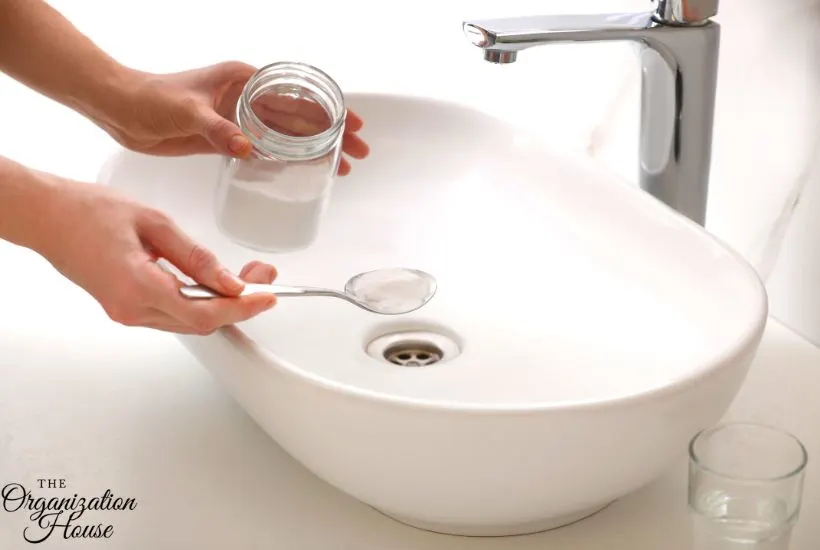
A smelly sink drain is really unpleasant and it could even mean bad news.
Smelly drains can be a breeding ground for bacteria and mold, and nobody wants that.
If you’ve noticed a not so fresh scent wafting from your sink, it’s time to take action.
Cleaning a smelly sink drain is actually a relatively simple process.
It will help eliminate bad odors and improve the overall cleanliness of your home.
If you have a smelly sink drain, don’t worry!
We are here to help!
With a few simple steps, you can banish those foul smells forever and restore freshness!
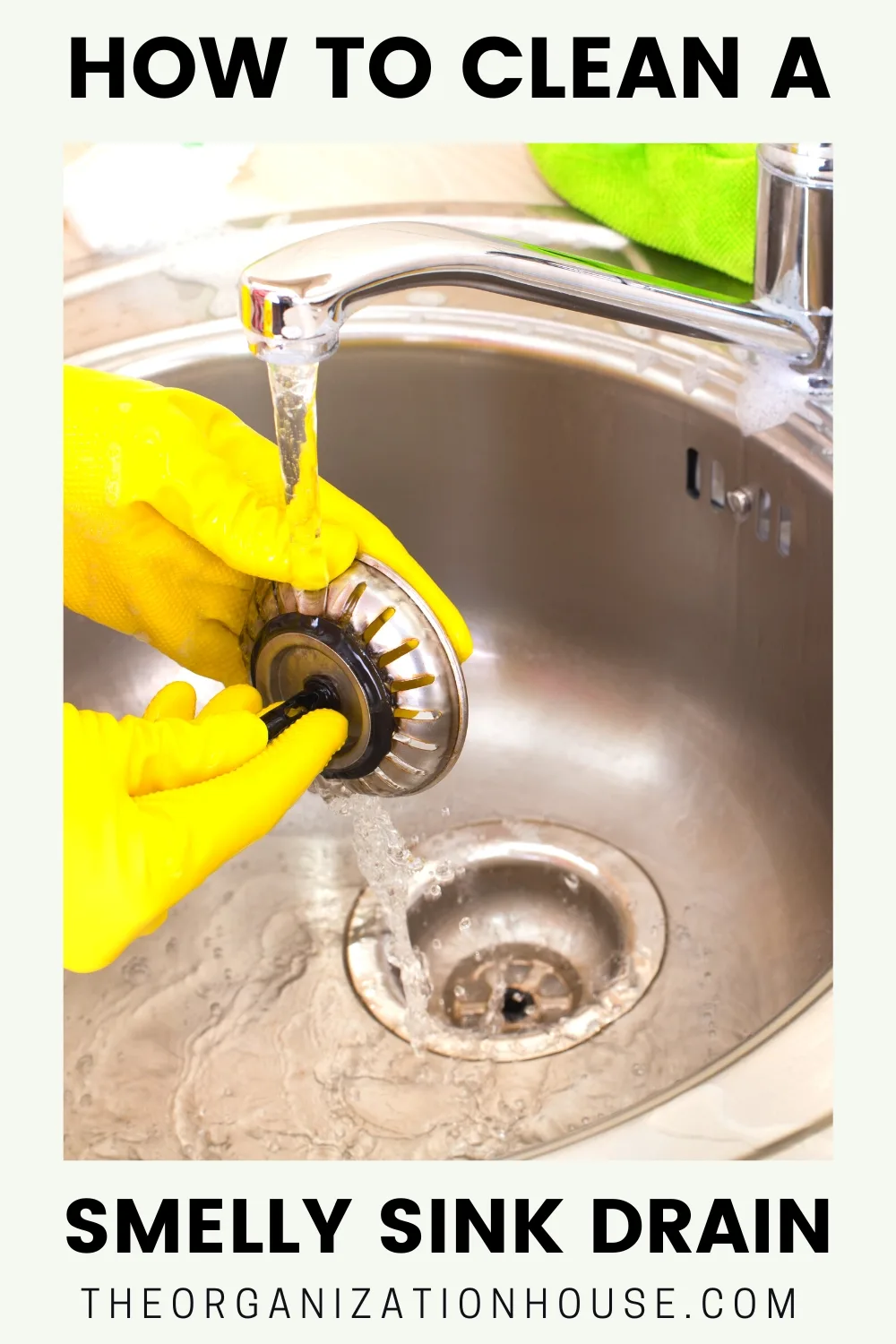
This article contains affiliate links to products that will help you get organized.
Banishing Odors in a Smelly Sink Drain
Step 1: Gather Supplies
Before you begin cleaning, it’s really important to make sure that you have everything you need.
Here’s a list of the supplies that you should have on hand in order to get started:
- Rubber gloves
- Baking soda
- Vinegar
- Boiling water
- A long-handled brush or pipe cleaner
- Paper towels
- Lemon or citrus peels (optional)
- Essential oils (optional)
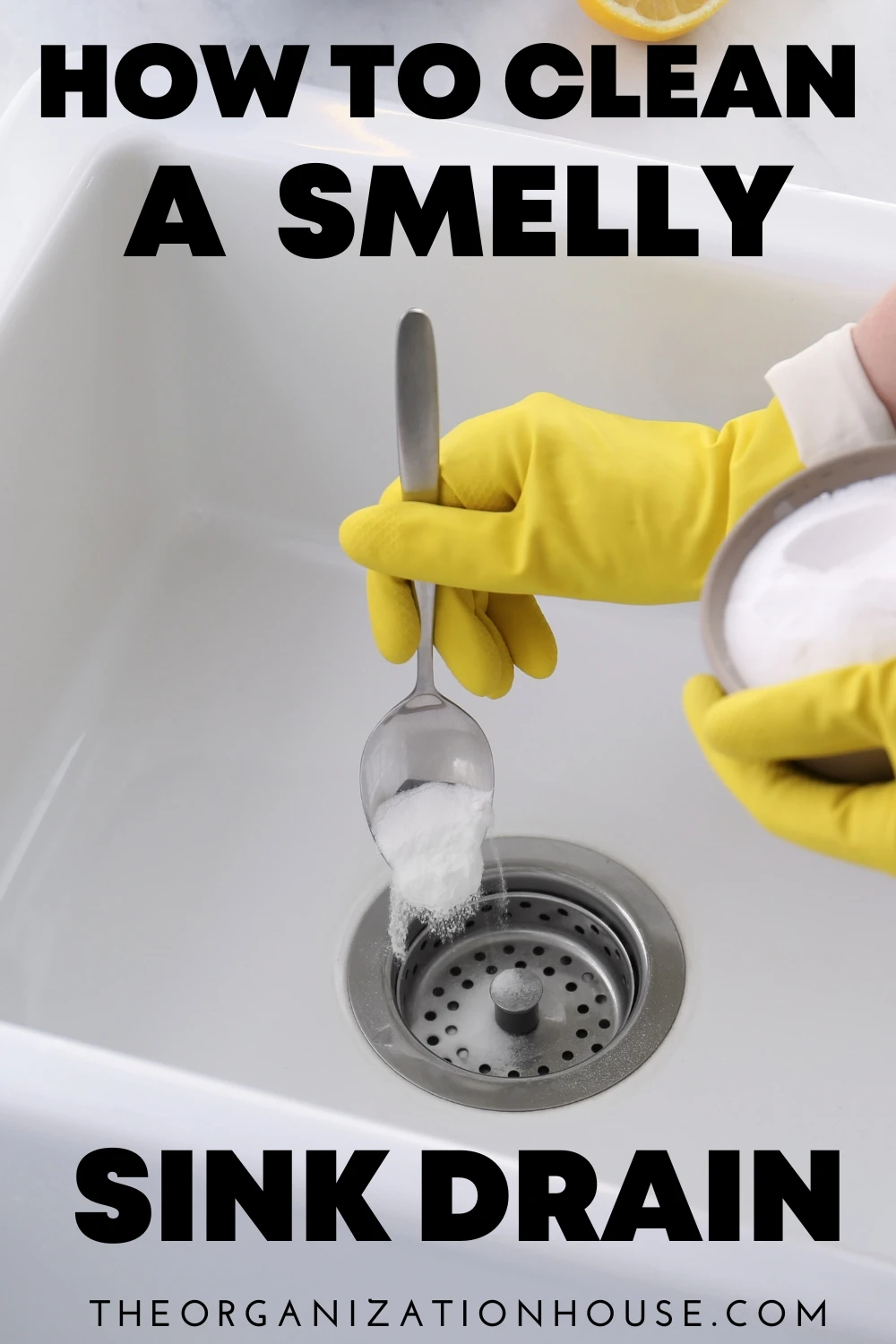
Step 2: Remove Visible Debris
First, you’ll want to get rid of any visible debris or food particles that may be causing the odor.
Get those rubber gloves on and clear out all the yucky bits from the sink and drain opening.
Paper towels or a small brush may be helpful in getting some of this nasty gone.
Step 3: Baking Soda and Vinegar Treatment
Baking soda and vinegar are powerful natural cleaners for your kitchen sink.
They help to eliminate odors and break down organic matter in the drain.
To begin, pour 1/2 cup of baking soda down the drain, followed by 1/2 cup of vinegar.
You’ll hear fizzing and bubbling.
That’s the solution working its magic.
Allow the mixture to fizz and bubble for a few minutes.
This reaction helps to dislodge any grease or residue that may be clinging to the drain pipe.

Step 4: Hot Water Flush
After the baking soda and vinegar treatment has sat for a few minutes, get boiling water.
Carefully pour the boiling water down the drain.
The hot water will help flush away any loosened debris to further clear the drain.
This process helps to eliminate tough odor-causing substances that are still stuck on.
Repeat a second time with more boiling water.
Step 5: Brush the Drain
For stubborn odors or buildup, you may have to scrub the inside of the drain.
Use a long-handled brush or a pipe cleaner to get all down in there.
This will help to remove any residue that the baking soda treatment may have missed.
Make sure that you scrub all of the accessible areas of the drain pipe for the best results.
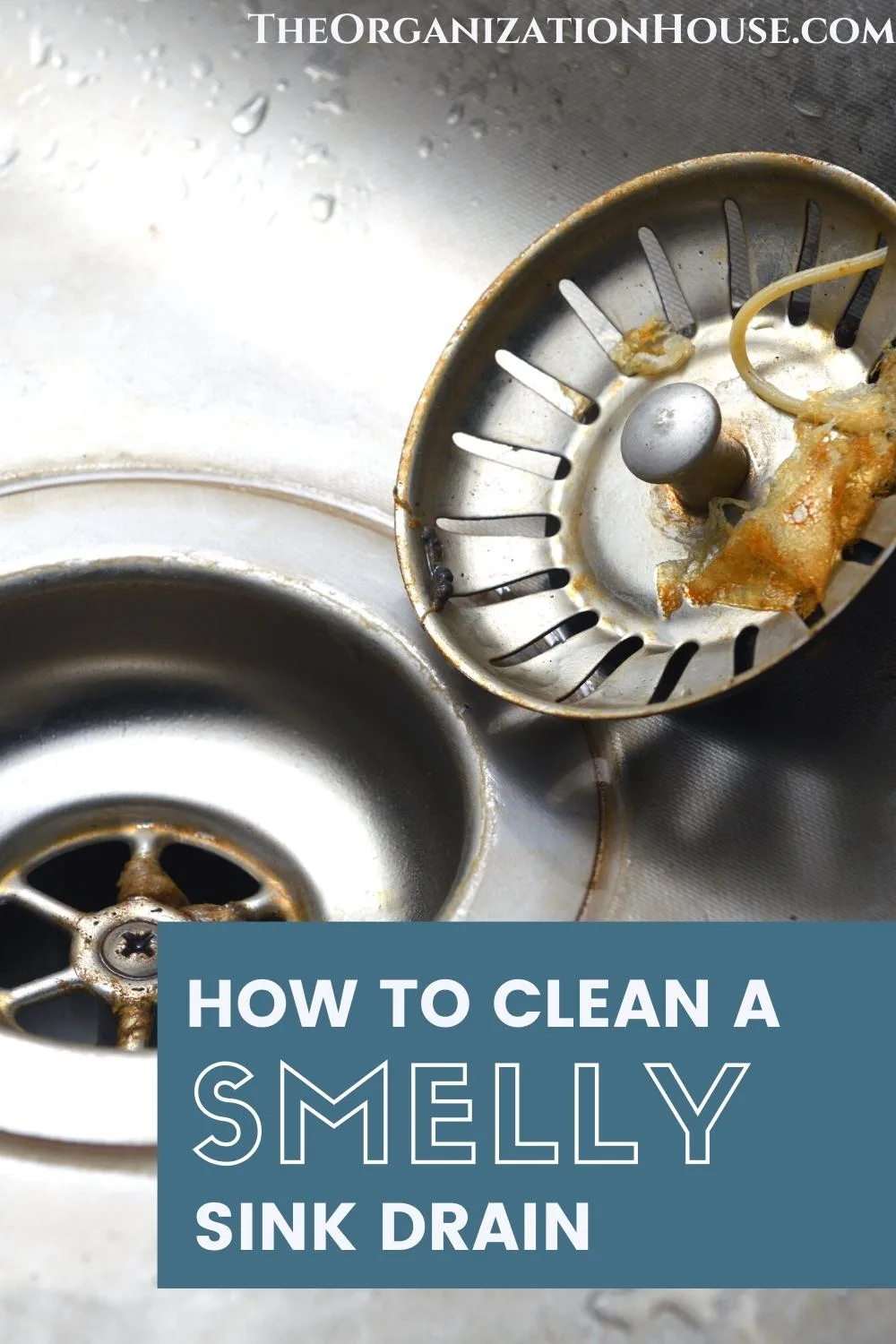
Step 6: Freshen Up
This step is optional, but it will leave your newly clean drain smelling extra fresh.
If you have a garbage disposal, add a few citrus peels in the drain and run the disposal.
You can choose to put a few drops of your favorite essential oil down the drain.
Either way, run hot water afterward to help release the fragrance throughout the pipes.
Step 7: Regular Maintenance
Now that your smelly sink drain is no more – let’s keep it that way!
To prevent future odor problems, it’s important to practice regular maintenance.
Here are a few things that you can do to keep your sink smelling fresh:
- Avoid pouring grease, oil, or coffee grounds down the drain.
- Use a drain strainer to catch food particles and debris.
- Run hot water down the drain after each use to help flush away any residue.
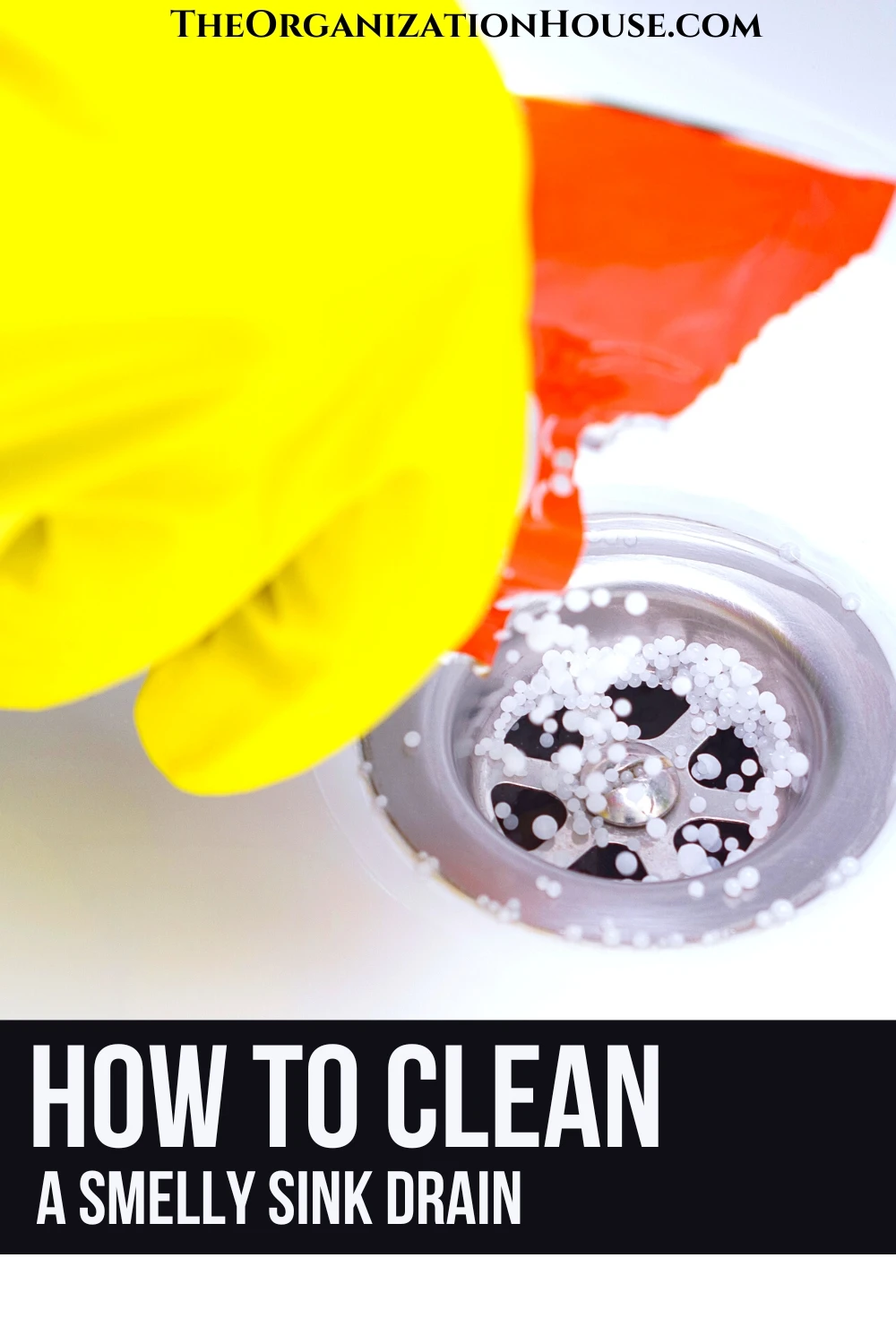
Cleaning A Smelly Sink Drain
Cleaning a smelly sink drain doesn’t have to be a terrible task.
By following these simple steps, you can eliminate unpleasant odors in no time.
Not only that, but you can easily keep your sink drain fresh, clean, smelly-free.
Remember to perform regular maintenance to prevent odors from recurring.
Get ready to say goodbye to smelly sinks and enjoy the fresh scent of a clean drain today!

